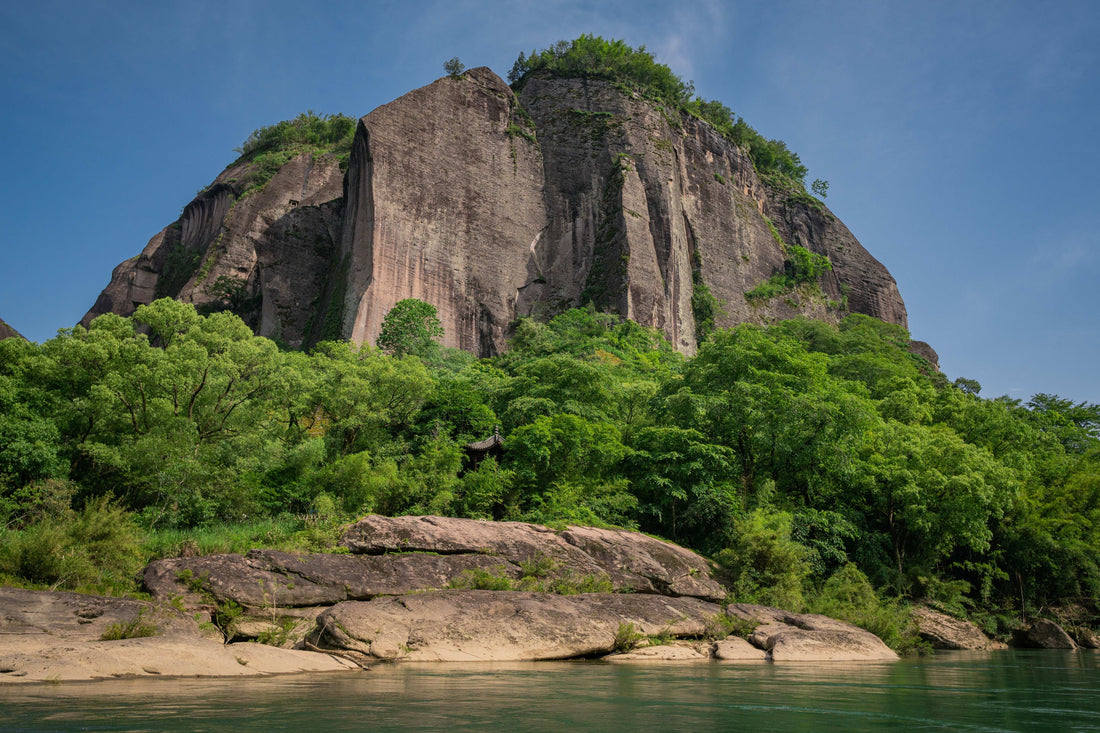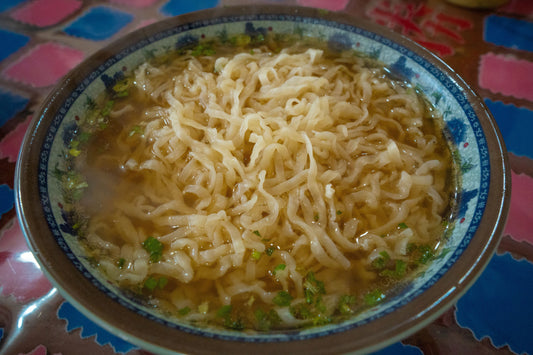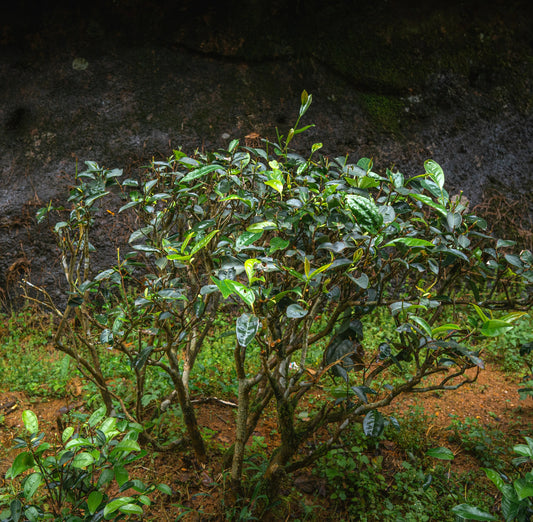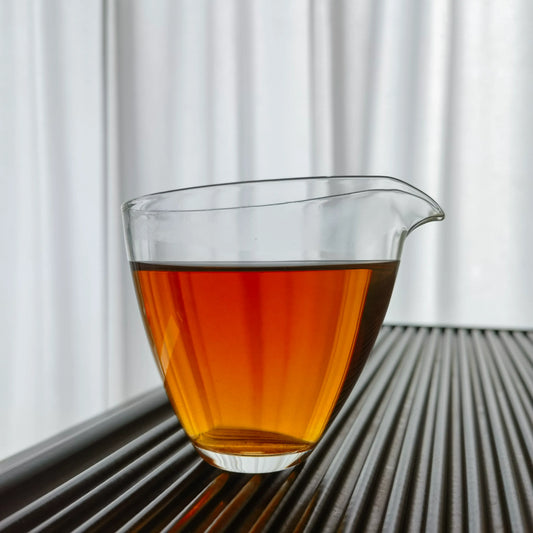
How does the local geography influence the taste of Wuyi Rock Tea?
With rock rhyme and floral aroma, Wuyi Rock Tea is the “essence of mountains and rivers.” It not only bears the charm of the landscape but also reveals the intimate correlation between the geographical features and tea quality. In the unique geographic environment of Wuyi Mountains, the generation of this famous tea is not only a miracle, but also a beautiful story of harmony with nature.
In this post, we’ll explore how steep slopes and hidden microclimates create the bold, floral flavors that make Yancha the “rock star” of the tea world.

A cup of rock oolong in Rooteas family-owned tea farm
Environment and Ecology of Wuyi Mountain
1.Geological Influence
Wuyi Mountain is a typical Danxia landform created by weathered rock and gravel (rock with many minerals). This landform has its unique red cliffs and zigzag valleys. As time goes by, the natural deposition of organic matter in the valley makes this area have good soil fertility and unique ecological conditions to cultivate tea.

A valley landform in the Wuyi Mountain
2.High Altitude & Microclimates
The average altitude of most tea plants in Wuyi Mountain is about 600 meters. High altitude is the premise of the temperature difference between day and night. With more sunlight received during the day, the photosynthesis of tea trees is strong, and more organic compounds are produced. At night, the low temperature makes the tea tree slow down the respiration process, and the consumed organic compounds are small, so the accumulation of organic matter in tea leaves is more sufficient.
This will make the brewed tea have a higher content of water-soluble substances in the leaves and a more full-bodied and concentrated infusion.
The higher altitude also leads to the unique humidity in this area. The air in the higher areas comes from the lower areas below, which is condensed and precipitated due to its temperature change and can form fog and mist. The large day-night temperature difference can also increase the relative humidity of the air. The overall relative humidity of the air in Wuyi Mountains is high throughout the year and averages about 80%.

Foggy day in the Wuyi Mountain
This micro-environment benefits tea plants in two key ways:
A.Tender leaves: High moisture slows fiber production, keeping buds and leaves softer.
B.Flavor boost: Fog scatters sunlight, increasing diffused light, especially blue and violet wavelengths. This gentle light bath helps develop more aromatic compounds in the leaves.
Soil Composition and Mineral Absorption
1.The Composition of Soil
The soil of this place is mainly derived from volcanic breccia, red sandstone, and shale. For hundreds of years of continuous tea farming activities such as terracing construction, slope excavation, and soil filling, it has formed a unique, layered soil profile, with loose and well-drained soil, purplish-gray brown sandy grains and small pebbles intercalated.
In addition, the soil is also rich in organic matter, and the available phosphorus and potassium content is relatively high. Generally speaking, it is slightly acidic, and it is a good growth environment for tea trees.

Soil in the Wuyi Mountain
2.Minerals and Taste
Soil minerals also have an equally direct influence on the production of substances in the tea. For example, the content of potassium in the soil will directly influence the metabolism of aroma substances, and manganese in the soil can cause the tea tree to produce and accumulate more organic matter.
In conjunction with nitrogen, phosphorus and other nutrients, this is what contributes to rock oolong's typical brisk, sweet, and rich taste with a floral aroma. In contrast to mineral-poor soil such as loess, Wuyi's soil minerals cause tea leaves grown here to contain more nutrients, which in turn produces a fuller-bodied infusion with layered complexity.
The Influence of Water and Streams
Curving streams and springs are scattered across the Wuyi tea gardens, forming an extensive subterranean irrigation system. The tea bushes flourish here and grow leaves with high levels of caffeine and nitrogen-based aroma substances. This is how rock tea develops its high levels of fragrance, mellow profundity and its superior quality. It is the work of an ideal ecosystem and masterpiece in nature.

A winding mountain stream in Rooteas family-owned tea farm
Also, geologically, the Wuyi rocks have the capacity to absorb and slowly release water, which ensures a constant source of water for the rock oolong. This abundant water supply is the vital and unique water component that further enriches the rock oolong’s distinct mineral content and complexity.
A Taste of the Region Itself
“岩岩有茶,非岩不茶”(This is a saying passed down orally among the people of Wuyi, meaning: “Where rock stands, tea thrives; without rock, tea cannot exist.” ). Rock tea is the very essence of the terroir, the crystallization in liquid form of the mountains in which it grows. Rock rhyme is sedimented in the mineral rich bedrock left over from volcanic eruptions thousands of years past, where every sip is a journey back in time. Mountain mist, swirling through the ancient stone walled terraced gardens at high elevations, intensifies floral fragrance and attenuates a honeyed sweetness, while pure spring water gives its amber liquor crystalline clarity.

Amber liquor of Rooteas Da Hong Pao rock oolong
Rock Oolong is a personal exploration of Wuyi’s terroir: in the lingering mineral finish, the taste of the mountains themselves. To drink rock oolong is to explore the cliffs and canyons where the elements of rock, water and sky meet to transform the terroir into a poem in a cup.





